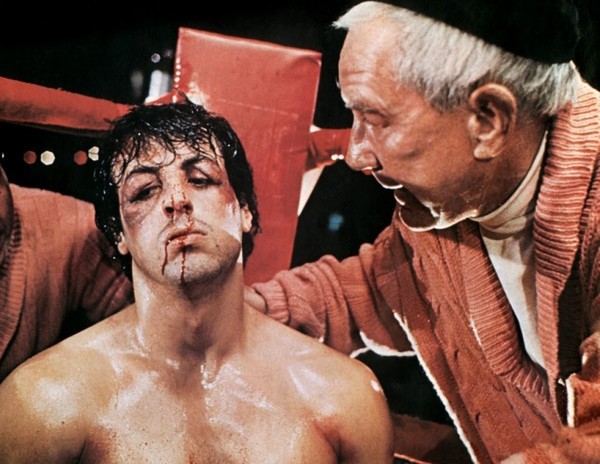Congratulations to everyone who’s kept up!
Even if you haven’t gotten to page 40 yet, good job for staying with the challenge. I’m proud of you.
It’s time we got real, though.
You’re in the thick of it. Act 2. This is where the big gaps in your story start rearing their ugly head. There are some sections you knew you didn’t know and now you’re learning about whole other parts of your story that aren’t as clear as you thought they were.
This means that you might have 20, even 30 pages, before you reach the next part of your story you’re actually familiar with.
A few of you asked that very question yesterday. The next checkpoint isn’t for a while. What the heck do I write in the meantime?
One thing that can help you fill up lots of screenplay real estate is subplots. Subplots are basically storylines that involve your hero and secondary characters.
If you look at Rocky, one of the brilliant things about that movie is that there were four characters OUTSIDE OF ROCKY who all had fleshed out roles. You had his girlfriend, Adrian, of course. You had Mick, his trainer. You had Pauly, his alcoholic best friend. And then you had Apollo Creed.
Whenever you needed a scene, you could explore a component of any one of those relationships, like after Rocky gets chosen by Creed to fight for the heavyweight championship, a desperate Mick comes to Rocky’s place and begs to train him. Or when Pauly gets wasted beyond comprehension at a local bar, Rocky has to rescue him.
Depending on what kind of movie you’re writing, you might even have second-tier subplots (or “sub-subplots”). These would include characters outside of your hero. For example, in Rocky, Adrian is Pauly’s sister. The two of them have their own family issues, which results in a few dustups over the course of the movie.
If you don’t have subplots to go to, it probably means you’re not giving your secondary characters enough to do. Rethink that aspect of your story and you’ll have more scenes to write.
Also, don’t be afraid of holes in your narrative.
Sometimes they can actually work to your advantage.
Think of it like this. If you promise that a big moment is coming up, the lead up to that moment is often just as engaging as the moment itself. It’s like a roller coaster ride. They make you wait in that line for an hour before you get on the ride. The anticipation built up during that wait is sometimes better than the ride itself.
So if you promise that a heist is coming up, we’re going to stick with you. Your job, in those pages leading to the heist, is to come up with scenes that cast doubt on the job being successful. I call these “Uh-oh” moments. Everything’s looking good but then, “Uh-oh. They’re forced to move the heist up a week after the bank changes its brinx truck pick up times.”
They go to pick up the getaway car. But, uh-oh, the getaway car they thought they were getting didn’t come through. They’ll have to use one of their own cars now, increasing the chances that someone will ID them. Oh, and their safe-cracker? Uh-oh. He comes by and says he wants a bigger cut of the prize. They don’t want to give him that much. What do they do now?
Once you know where you’re going with the story, bring the reader in on it so they can anticipate it. Then, in the meantime, fill in gaps with subplot scenes and scenes that introduce obstacles which make achieving the goal harder. Don’t worry, we’ll stay with you if the moment you promised us sounds exciting. It’s when you don’t tell us anything that’s coming up that we lose interest.
It’s the weekend. Be daring and write 10 pages these next couple of days instead of 8. I dare you!


